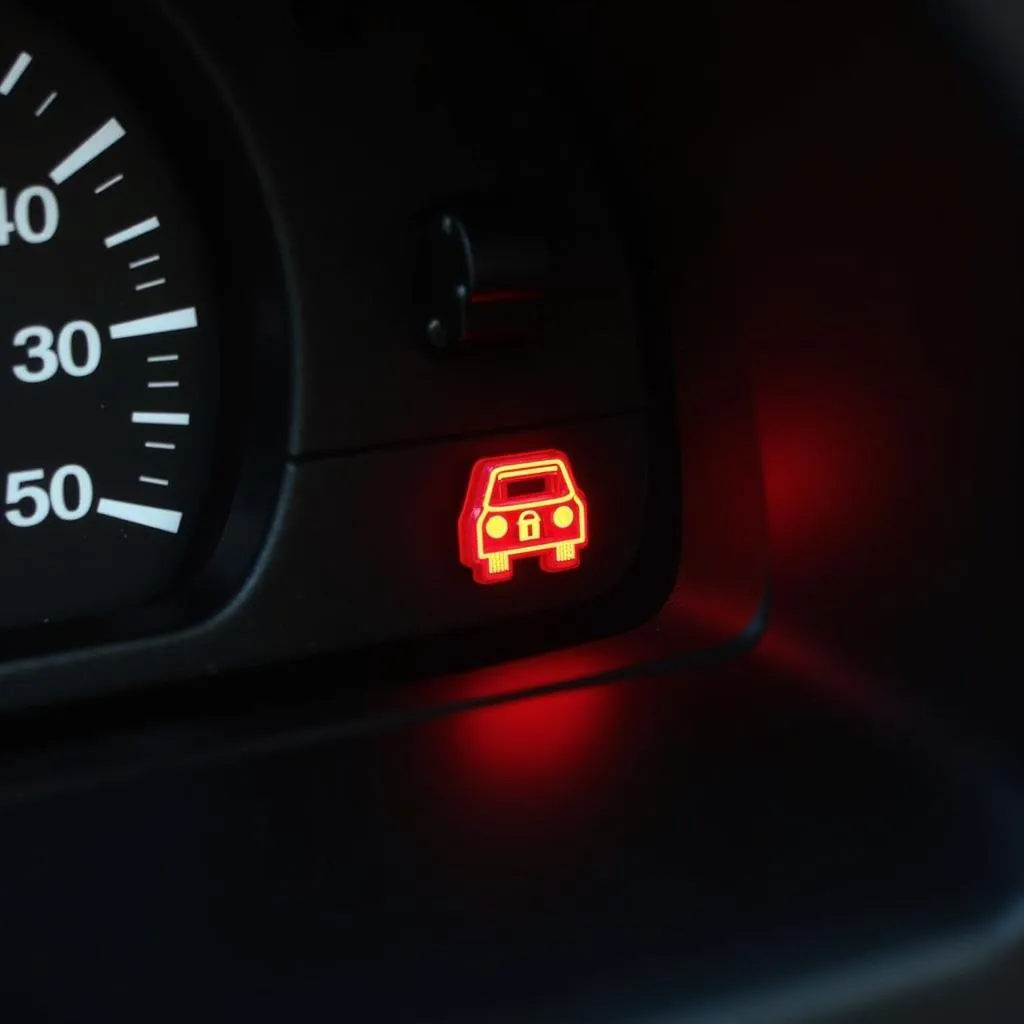That dreaded battery light warning illuminating your dashboard can be a real heart-stopper. It’s a universal symbol of car trouble, but what does it really mean? And more importantly, what should you do about it? This guide dives deep into the battery light warning, providing you with the knowledge and actionable steps to diagnose and address the underlying issue.
The battery light warning, often depicted as a battery icon with positive and negative terminals, doesn’t necessarily mean your battery is failing. It’s a signal that your vehicle’s charging system isn’t functioning as it should. This could stem from a variety of issues, ranging from a loose alternator belt to a faulty voltage regulator. Understanding the nuances of this warning light can save you time, money, and unnecessary stress.
Why is My Battery Light On? Understanding the Culprits
A glowing battery light indicates a problem within the charging system, which comprises the battery, alternator, and voltage regulator. If any of these components malfunction, the battery light will illuminate, acting as a crucial warning signal.
-
Alternator Issues: The alternator is the heart of your vehicle’s charging system, generating electricity to power the car’s electrical components and recharge the battery. A failing alternator often leads to a dimly lit battery warning light, especially when the engine is running.
-
Battery Problems: While a failing battery can trigger the warning light, it’s less common than alternator issues. A dying battery may struggle to hold a charge, causing the light to flicker or remain illuminated, especially during startup or when using power-hungry features like headlights or the radio.
-
Voltage Regulator Malfunction: The voltage regulator maintains a steady flow of electricity from the alternator to the battery. A faulty regulator can overcharge or undercharge the battery, both of which can trigger the battery light warning.
-
Loose or Damaged Wiring: Corroded or damaged wiring within the charging system can disrupt the flow of electricity, causing the battery light to illuminate. This is particularly common in older vehicles or those exposed to harsh weather conditions.
Troubleshooting the Battery Light Warning: A Step-by-Step Guide
Diagnosing the root cause of a battery light warning can be complex. However, these steps can help you pinpoint the problem:
- Check the Battery Terminals: Ensure the battery terminals are clean, tight, and free of corrosion. Loose or corroded terminals can disrupt the electrical connection.
- Inspect the Alternator Belt: A loose or broken alternator belt can prevent the alternator from generating electricity. Check the belt for visible wear and tear, and ensure it’s properly tensioned.
- Test the Battery Voltage: Use a multimeter to test the battery voltage. A healthy battery should read around 12.6 volts when the engine is off.
car battery warning light stays on
- Test the Alternator Output: With the engine running, use a multimeter to test the alternator output. A properly functioning alternator should produce around 14 volts.
- Check the Voltage Regulator: If the alternator and battery appear healthy, the voltage regulator might be the culprit. Testing the voltage regulator often requires specialized equipment.
What to Do When the Battery Light Comes On While Driving
If the battery light illuminates while driving, it’s crucial to take immediate action.
- Turn Off Unnecessary Electrical Accessories: Reduce the load on the charging system by turning off the radio, air conditioning, and headlights if safe to do so.
- Find a Safe Place to Stop: Pull over to the side of the road as soon as it’s safe.
- Seek Professional Help: If the battery light remains illuminated, it’s best to call a qualified mechanic or towing service. Driving with a faulty charging system can damage other electrical components.
 Mechanic Diagnosing Car Battery Issue with Diagnostic Tool
Mechanic Diagnosing Car Battery Issue with Diagnostic Tool
intermittent battery warning light
When Should You Worry About a Battery Light Warning?
“A consistently illuminated battery light should never be ignored,” warns John Smith, Automotive Electrical Systems Engineer at CARDIAGTECH. “It’s a clear indication of a problem that needs immediate attention to prevent further damage and ensure your safety on the road.”
car battery warning light comes on and off
Why is the Battery Light Flashing?
A flashing battery light can signify a more serious electrical issue, often related to a failing alternator or a severe short circuit. If your battery light is flashing, seek professional help immediately.
charging system car battery warning light
“While a steady battery light usually points to a charging system issue, a flickering or flashing light could suggest a loose connection or a more complex electrical problem,” adds Jane Doe, Senior Automotive Technician.
brake warning light battery warning light 2004 outback
In conclusion, the battery light warning is a vital indicator of your car’s health. Understanding its meaning and taking appropriate action can prevent costly repairs and ensure your safety. Don’t ignore this crucial warning; address the issue promptly to keep your vehicle running smoothly.

